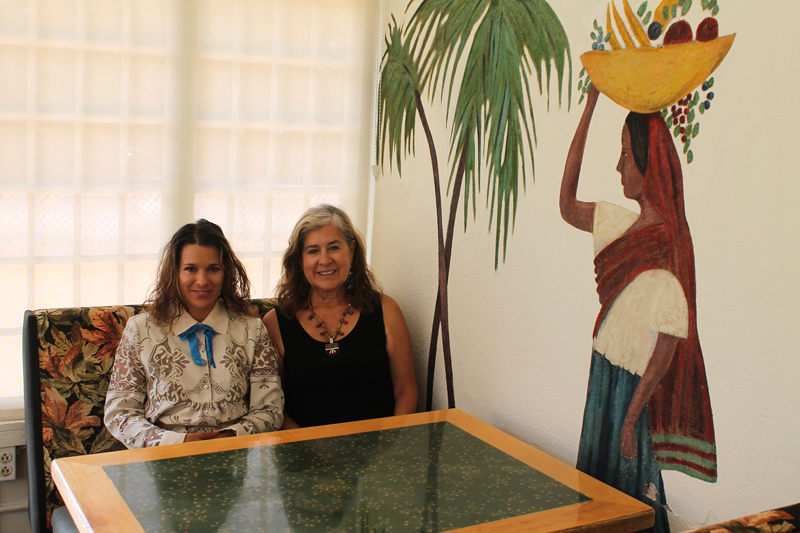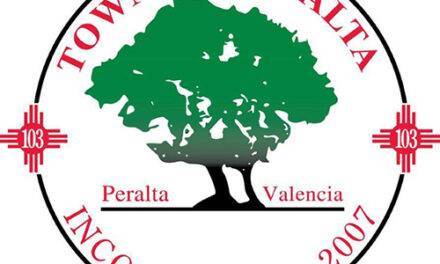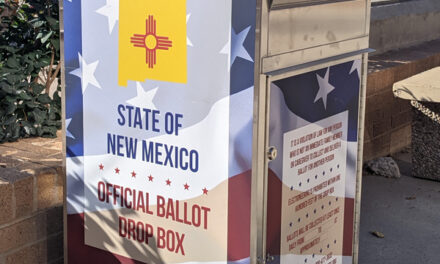A home filled with history; a future of uncertainty
(Editor’s note: This is the last of a three-part series on the historic Luna Mansion in Los Lunas. This week, we explore the historic names associated with the family and the house, and possibilities of the future of the structure.)
LOS LUNAS — It began life as the home of the Luna-Otero family. There were gracious weddings featuring red chile enchiladas and orange blossoms.
It stood through the roaring 1920s, survived the Great Depression, watched as a tiny village became a small city, bustling with chain restaurants.
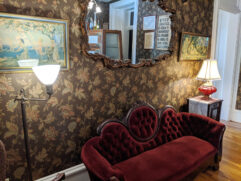
A velvet upholstered divan welcomed visitors to the Luna Mansion to sit and drink in the atmosphere after getting a drink from the Alvarado Bar.
It was a destination for those seeking a unique venue for birthday and anniversary celebrations, wanting to partake of a lobster and steak dinner in the heart of history.
It was and is the Luna Mansion.
While the years have turned around the village of Los Lunas’ best known landmark, the Luna Mansion has remained a staid fixture — protected on both a state and national level on historical registries.
The property was purchased by the Torres family — owners of Teofilo’s Restaurante just across the street — in 2009.
The family carried on the fine dining tradition, carrying the restaurant into a renaissance of sorts for several years before making the decision to close the restaurant earlier this year.
The decision didn’t come suddenly; the restaurant was already struggling some last year, the family said, so when the COVID-19 pandemic closed restaurants across the state, it seemed like a good time to step away.
Now the mansion sits and waits for its next incarnation.
With its extensive collection of historic paintings and other artifacts of the Luna-Otero family, the Torres family and local historians say they would love to see it become a museum of some kind.
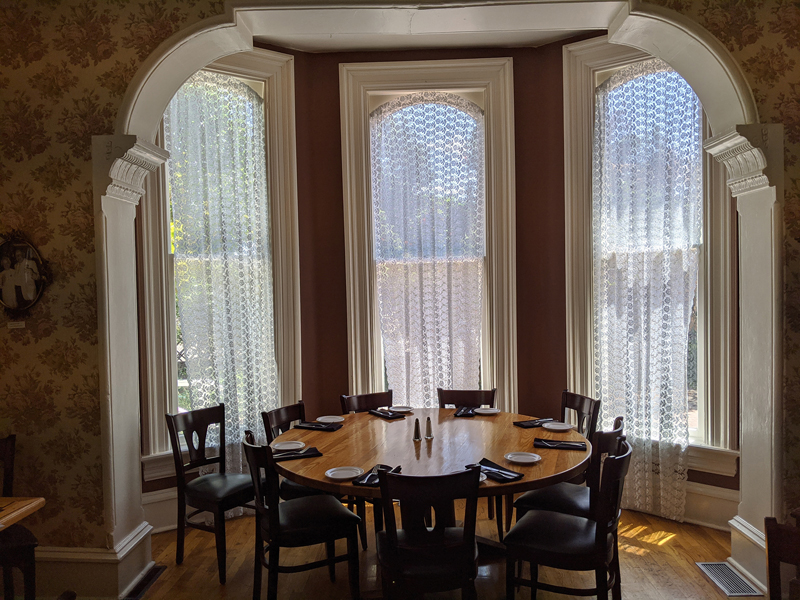
Julia M. Dendinger | News-Bulletin photos
Now a dining room, the former parlor in the Luna Mansion takes in a view of the east yard and landscaping. The bay window in the former grand salon faces what is now Los Lunas’ busy Main Street and a portion of old Route 66.
“I would love to have it as a living museum. It gives people a sense of time and place,” said Cynthia Shetter, the village director of the Museum of Heritage and Arts and public library. “It gives people, it gives young kids, someone to look up to like Maximiliano Luna.”
According to Census information, Maximiliano Luna was a sheep herder’s son. In actuality, he was one of the key people representing the then territory of New Mexico in its bid for statehood.
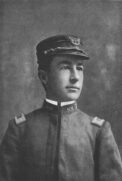
Photo courtesy of the Los Lunas Museum of Heritage and Arts
Capt. Maximiliano Luna, 1870-1899.
According to Richard Melzer, local historian and author, at the time there was a question of whether New Mexicans were more loyal to Spain as opposed to the United States. Luna felt a huge responsibility, a huge duty to represent New Mexico and specifically the Hispanic population, Melzer told the News-Bulletin in a 2016 interview.
Luna was the only Hispanic captain in Theodore “Teddy” Roosevelt’s Rough Riders during the Spanish-American War. Before riding with the Rough Riders, Luna served as a captain in the New Mexico National Guard from 1897-98 and was a volunteer with the U.S. Volunteer Infantry after returning to the states from the Spanish-American War.
That loyalty and fealty to the U.S. helped cement New Mexico’s place as the nation’s 48th state.
“He gives the kids someone to look up, to give them a role model,” Shetter said. “Maximiliano did more for the Hispanic movement and for statehood than anyone else in the state. So, he was a little bit more than a shepherd’s son.”
The local Rough Rider was just one such significant New Mexican to be attached to the mansion. Women in the family fought for voting rights, education and against sexual discrimination. Solomon Luna is credited as the father of the state’s Constitution.
Hortencia Torres said as a native of Valencia County, she has always loved the history of the mansion. When the family bought it, she was determined to restore it to its former glory, researching fabrics and wallpapers, accessories and fixtures appropriate to the 1920s and ’30s.
Johnnah Torres, Pete and Hortencia’s daughter and co-owner of the mansion, said the first floor of the mansion is the part that resonates most with her.
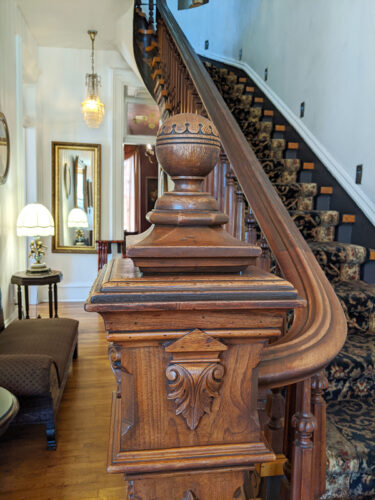
The stairs up to the second floor of the Luna Mansion feature a coffin corner — a low-profile spot in the hand rail that allowed for a coffin to be easily brought up and down the stairs.
“It’s just so elegant with the banister coming down to the foyer as you enter. When it was the family’s home the grand sala (grand salon) would have been the space where they entertained and had guests,” Johnnah said. “It has the big, gorgeous window in the front and that’s where they used to have their Christmas tree and that’s where the dancing was done and the entertaining. I love that room and I love the paintings.”
The warm, rich wood paneling is still in place, giving the former parlor a homey feel, a place where you could sit for a serious conversation or some tea, she said.
While the space has been converted into dining rooms, the rooms still retain their grandeur from the past as well as modern touches, such as a mural by renowned Los Lunas santero Nicolas Otero.
The mural, in what used to be the family dining room, depicts a scene straight out of the roaring ’20s, complete with flappers.
“I love that mural. It has the feeling of the time but still it’s festive, they’re partying, having good time and that’s what we wanted for the people who are coming here — to have a good time,” Johnnah said.
Not only does the house hold much of the history of the Luna-Otero family, but other parts of the state and county. In the small bar downstairs, the antique bar stools were rescued from the old Alvarado Hotel in Albuquerque.
The Alvarado Bar also features a wood and enameled steel refrigerator unit former mansion owner Earl Whittemore found in a little store in Casa Colorada.
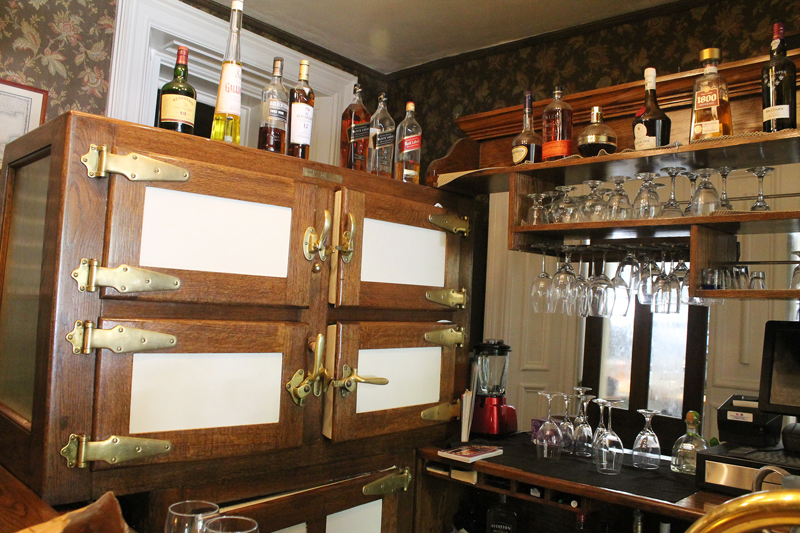
A refrigerator from a store in Casa Colorada kept beverages cold at the Alvarado Bar on the first floor of the Luna Mansion.
“It’s another local piece that Earl found and really used well,” said Johnnah. “It still works; we used it until we closed.”
The question now is: What comes next for the Luna Mansion?
The Torres’ say they are in no hurry to sell the historic property, wanting to find someone who will truly understand and appreciate the house.
“I loved Cynthia’s suggestion of a living museum. There’s so much that could,” Johnnah said.
With it’s kitchen, outdoor patios and dining spaces, the mansion could become a museum with a built in event center.
In a state of pause, Johnnah said the family will hold onto the mansion until they can find someone who will continue to protect it and its history.
The mansion was placed on the national and state historic registry in 1975 and the stone and iron wall surrounding the property was given added to the Most Endangered Places List by the New Mexico Heritage Preservation Alliance in 2009.
“We would really like for people to be able to come in and enjoy it, people from all over the world. It’s so magical. We know this and not enough people have been able to experience that,” Johnnah said. “You have to come in and feel these walls and feel these rooms. It needs to be experienced by more people.”
Julia M. Dendinger began working at the VCNB in 2006. She covers Valencia County government, Belen Consolidated Schools and the village of Bosque Farms. She is a member of the Society of Professional Journalists Rio Grande chapter’s board of directors.
